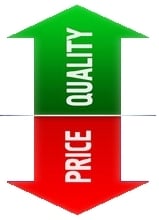https://www.youtube.com/watch?t=13&v=Hdpf-MQM9vY
In 2000 my family contacted a builder in order to build a home. After approximately ten months my family and I were happy to receive a two story home. This translates to approximately one story built every five months. Although this may seem common in the USA, a province in China called Dongting Lake was able to produce a 30 story building in 15 days. This feat was accomplished through a proper management plan and efficient execution. Although the building may have been built in 15 days the project was mapped and planned out long before. Project managers effectively developed an organized strategy, defined the project, estimated project times and costs, developed a project plan, and executed the plan.
The project managers involved in this undertaking understood the organization’s strategy and were able to align the projects with the firm’s mission. These managers needed to respond to various environmental factors as well as navigating resource scarcities. Managers could possibly use the SMART pneumonic to remember to be specific in targeting objectives, establish measurable progress checks, make sure the objective is assignable to specific individuals, develop a realistic idea of what can be done with the given resources, and understand the time duration to achieve the objective. This step is crucial in project management in order to lay the foundation of the entire project.
Managers properly defined the project, established priorities, and created an effective work breakdown structure. As you can see in the video, components of the building were developed off-site and were assembled on the land afterwards. This focused the project by created a plan, schedule, and budget that is able to be effectively managed at the respective organizational levels.
Many times projects may be properly defined and aligned with the organization’s strategy but when it comes to estimating the projects there may be a difference of opinions. Top-down estimates are generally made from top managers who have limited knowledge on process where as bottom-up approach is generally derived from individuals who have a great deal of knowledge of the process and can provide a check on various costs in the work breakdown structure. In my organization, we do not utilize the bottom up approach very often. When making decisions about work processes without fully understanding the work process seems to create inefficiencies in the organization. I think that process individuals should be included in the estimation as well as the development of the project plan. These individuals would be able to identify critical activities as well as provide a basis for scheduling other activities. This plan can then be managed by top management. With a proper plan, management can effectively manage various activities and deliver the project.
Execution is key to any project, especially when constructing a building. Some individuals may be worried about entering a building which was built in fifteen days, however when understanding the planning and management involved and witnessing the execution I would not be worried, would you?






